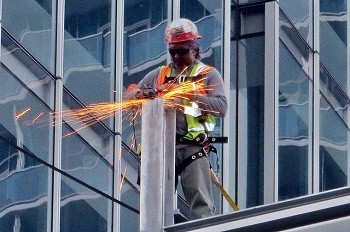Construction workers are exposed to various hazardous conditions that may result in a work-related injury.

Many work-related injuries are reported in the construction and manufacturing sector. Workers in the construction sector face hazardous situations, such as defective construction equipment, tools, and harmful substances such as asbestos. All states have a workers’ compensation system in place that safeguards the interests of workers injured at the workplace.
The Workers’ Compensation System
All workers in the construction sector are covered by workers’ compensation. Once they are injured at the workplace, they may seek various benefits that can help them get adequate treatment for their injuries and receive compensation for loss of wages. In return for the workers’ compensation benefits, an injured worker must forego their right to file a litigation against the employer, even if the injury was caused by malfunctioning construction equipment.
Manufacturers of Construction Equipment and Tools
Even if the injured worker receives workers’ compensation benefits, the injured worker may still file damages against the manufacturer of defective equipment that caused the injury. In some cases, even the vendor can be held liable for the injury. An example of a case when an injured employee can sue a manufacturer is when the injury was caused by a malfunctioning crane or falling off a ladder that was defective. The employee may file a lawsuit against the manufacturer if the equipment was defective, the design of the tool was inherently flawed, or when the manufacturer fails to paste a warning sticker on the tool or equipment.
Receiving Compensation for Your Injury
The laws governing workers’ compensation and personal compensation are fairly complicated, and each case will have a different set of circumstances and facts. So, it is important to consult with The Law Office of James M. Hoffmann at (314) 361-4300 to receive legal guidance.
Workplace Injury and Accident Causes
Asbestos Exposure
Asbestos Removal
Second Hand Asbestos Exposure
Sexual Assault Workplace
Physical Assault at Workplace
Workplace Injuries Assembly Line
At Fault Accident
Workplace Attack
Benzene Exposure
Injured on Lunch Break
Building Collapse
Workplace Bullying
Chemical Exposure in the Workplace
Chemical Hazards in the Workplace
Cold Stress in the Workplace
Combustible Dust Explosion
Computer Use
Construction Site Accident
Conveyor Belt Accident
On the Job Injury Cause by Coworker
Crane Accident
Injuries from Desk Jobs
Diesel Exhaust Fumes Exposure
Digging Injury
Breaking Company Policy
Drowning at Work
Workplace Drug Use
Electrical Workplace Accidents
Elevator Accident
Equipment Accident
Ergonomics in the Workplace
Excessive Overtime
Workplace Explosion
Extreme Danger
Fall at Work
Fire in the Workplace
Slicer Accident
Forklift Accident
Walk in Freezer
Gas Pipeline Accident
Hard Work
Workplace Hazardous Substances
Hazardous Equipment in the Workplace
Heavy Machinery Accident
Horseplay in the Workplace
Danger at Workplace
Insomnia in the Workplace
Jumping Accident
Ladder Falls at Work
Loading Dock Accident
Machinery Accident Workplace
Equipment Failure Accident
Mining Accident
Mold in the Workplace
Nail Gun Accident
Workplace Noise
Non Collision Accident
Heavy Objects
Workplace Office Equipment
Opioid Use
Injury at Work Due to OSHA Violation
Overexertion Injuries at Work
Use of Pain Killers
Power Tool Injury
Inadequate PPE
Repetitive Motion Injuries in the Workplace
Mansfield Bar
Scaffolding Accident
Secondhand Smoke in the Workplace
Side Effects
Silica Exposure
Sleep Disorder
Slip and Fall Injuries in the Workplace
Stairs at Work
Struck by a Vehicle
Tar Fumes
Toxic Chemical Exposure
Toxic Fumes in the Workplace
Car Accident While Working
Trench Collapse
Trips at Work
Unsafe Working Conditions
Workplace Violence
Welding Injury
Winter Hazards in the Workplace
Working Shifts
Photo credit: Alan Kotok via Flickr
